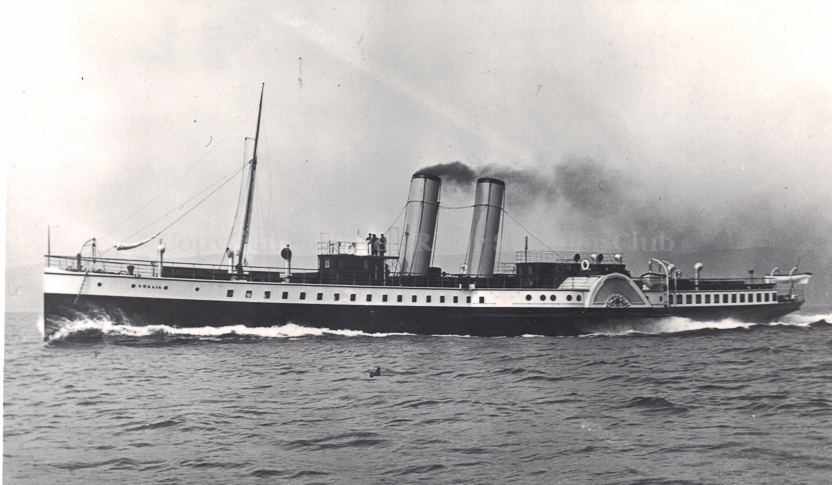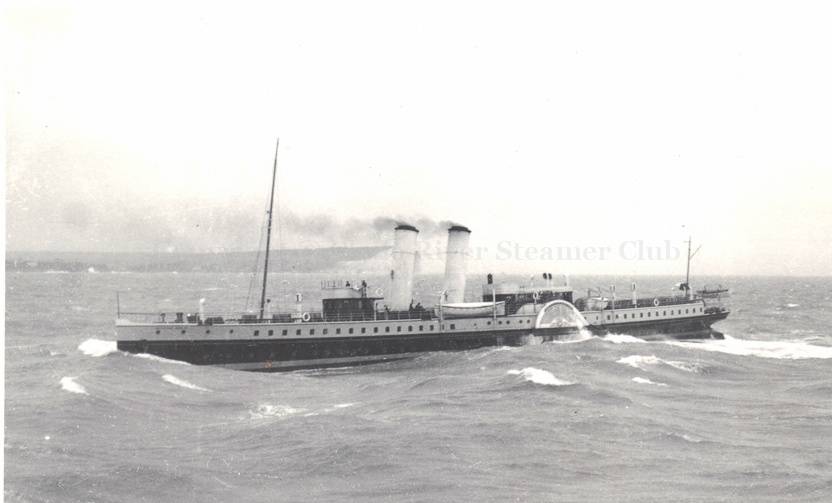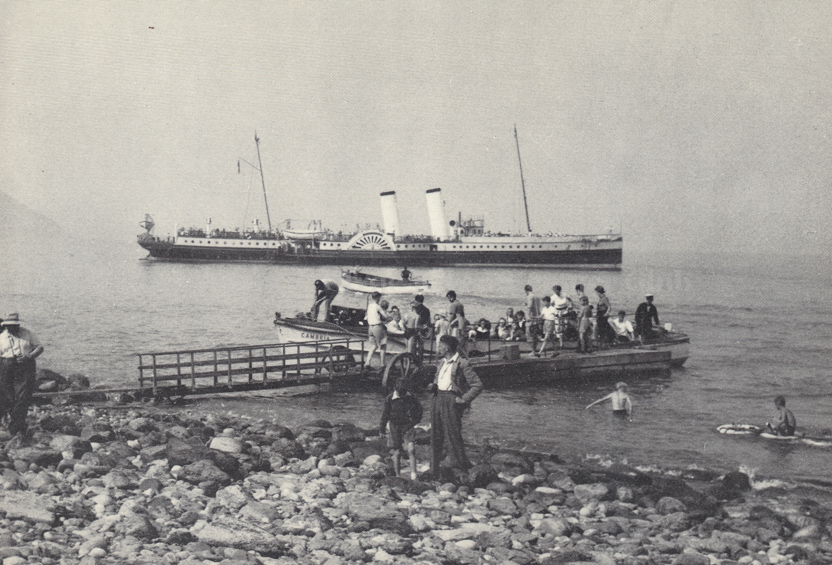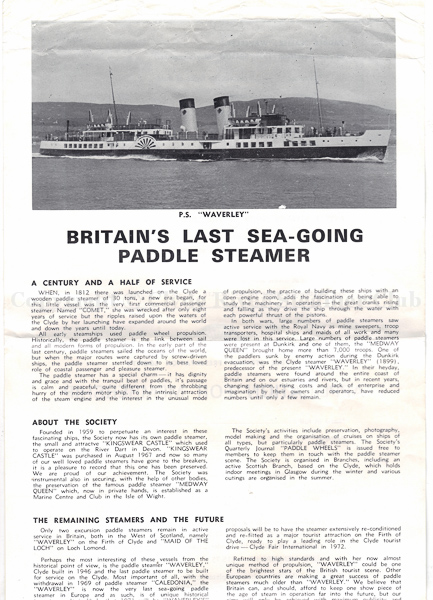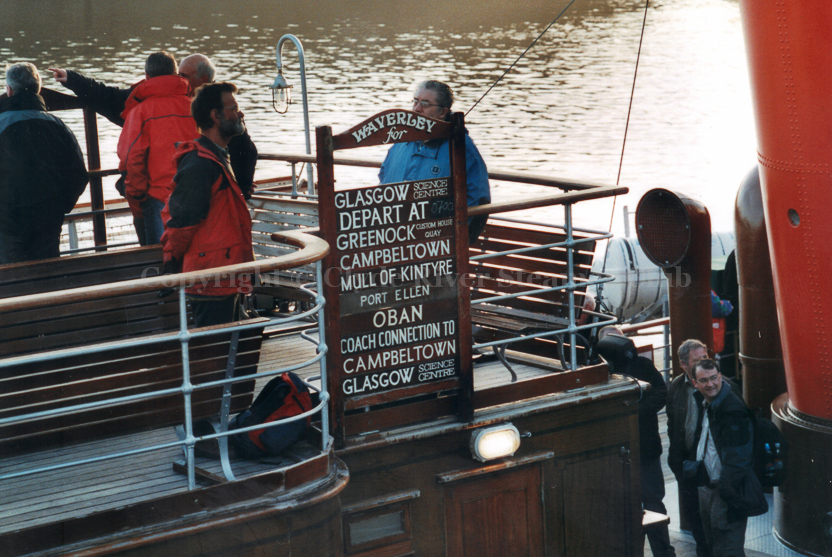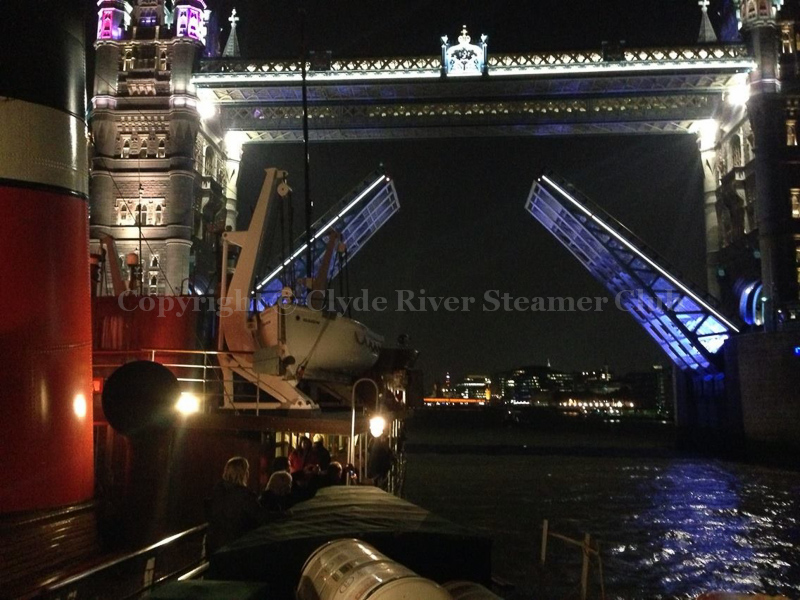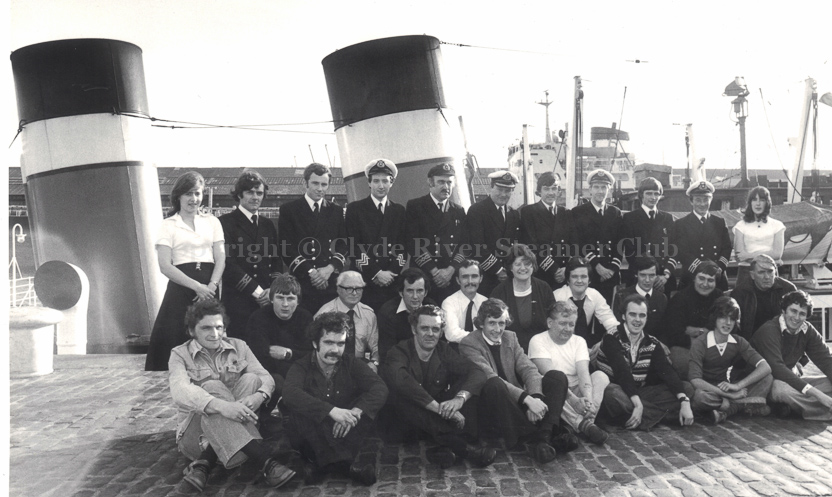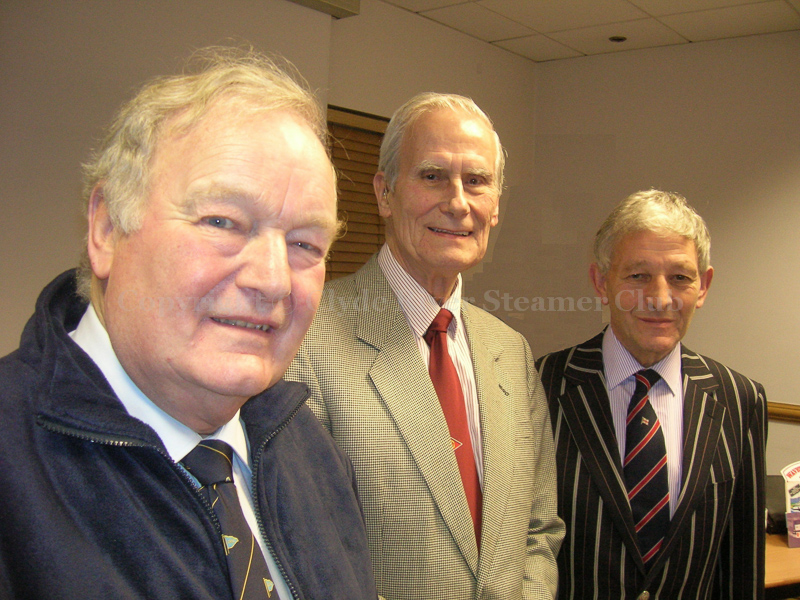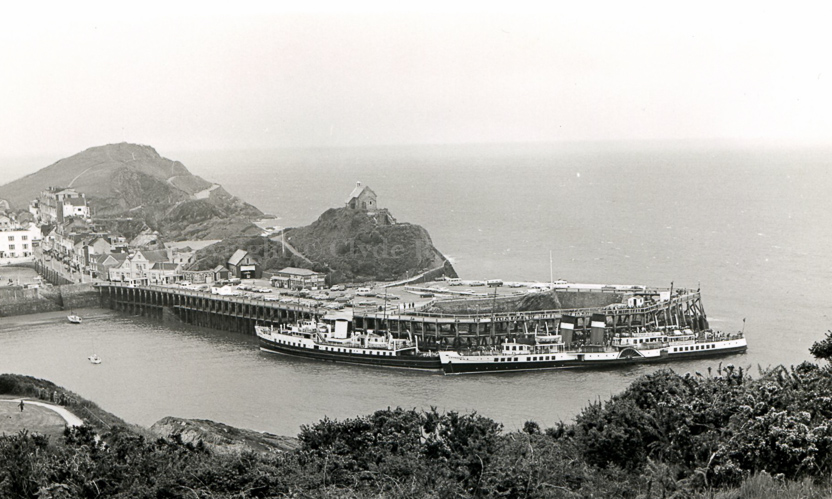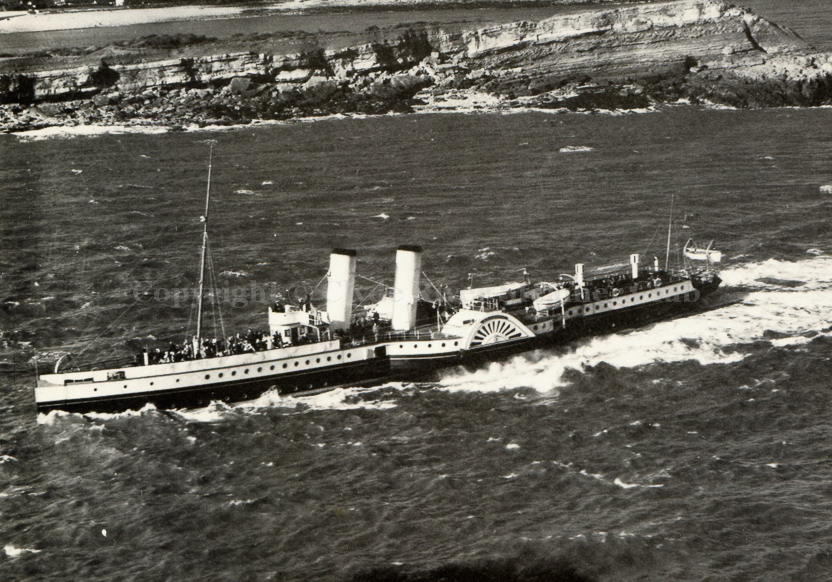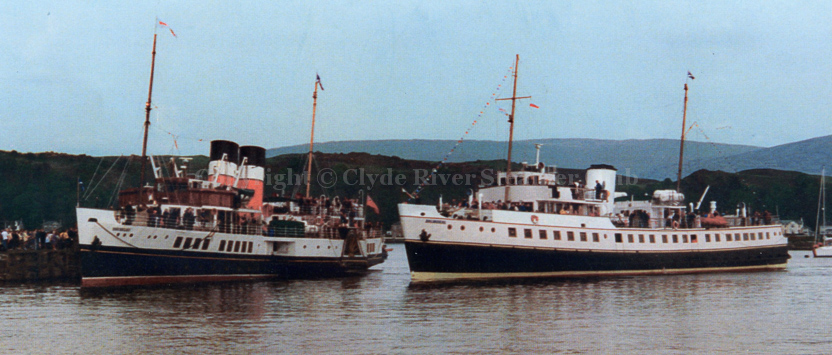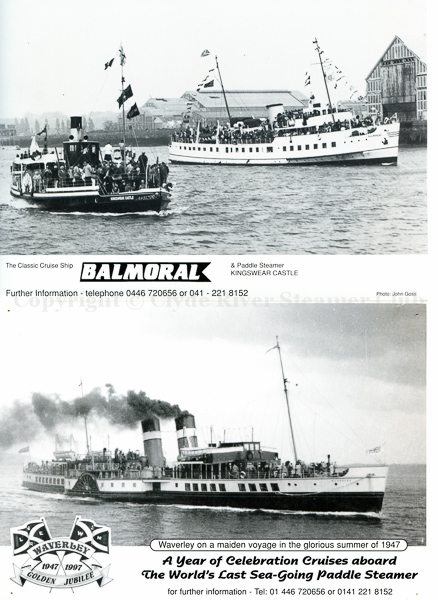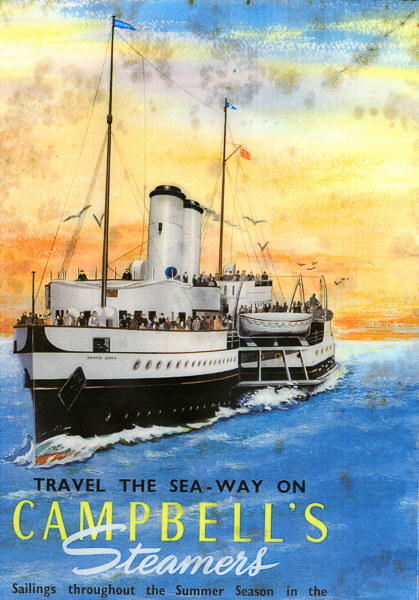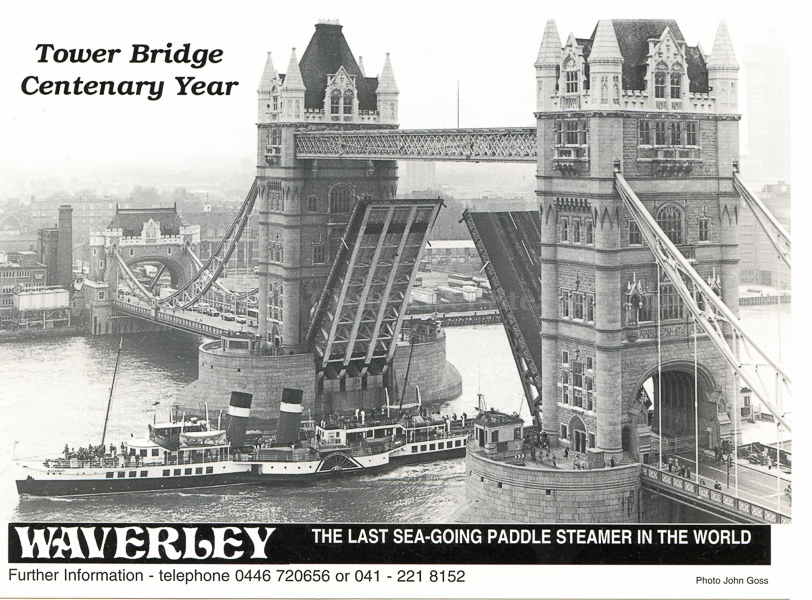
Terry Sylvester
The speaker at the CRSC’s November meeting in Glasgow was Terry Sylvester, best known for his work in securing the preservation of Waverley in the early 1970s and for his influence on the way the ship was managed and marketed over the following 25 years. Although the title of his talk was “From Earl of Dunraven to Skibladner”, Terry left little doubt as to where his sympathies lay — the Bristol Channel, where he grew up, and the Clyde, whose steamer heritage he had done so much to conserve.
Terry pointed out to a packed and appreciative audience that, while his work for the Waverley was undertaken on behalf of the Paddle Steamer Preservation Society, he had been a member of the CRSC for longer than the PSPS, having joined the Club in 1968 — the year he made his first Clyde sailing, on the paddle steamer Caledonia. Another surprising fact: his favourite ship was a turbine, Duchess of Hamilton.
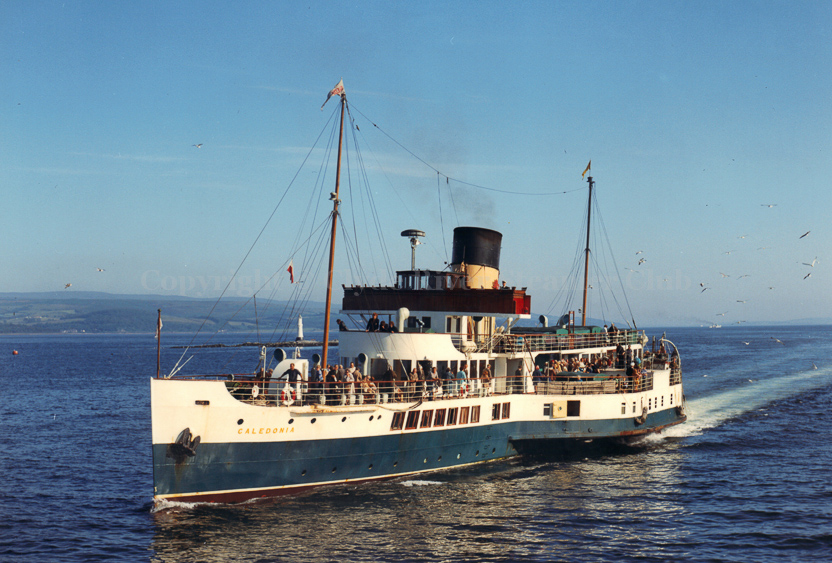 |
 |
| Caledonia was Terry’s first experience of a
|
Waverley, pictured at Dunoon in August 1967, was to dominate his life, but he had a preference for Duchess of Hamilton |
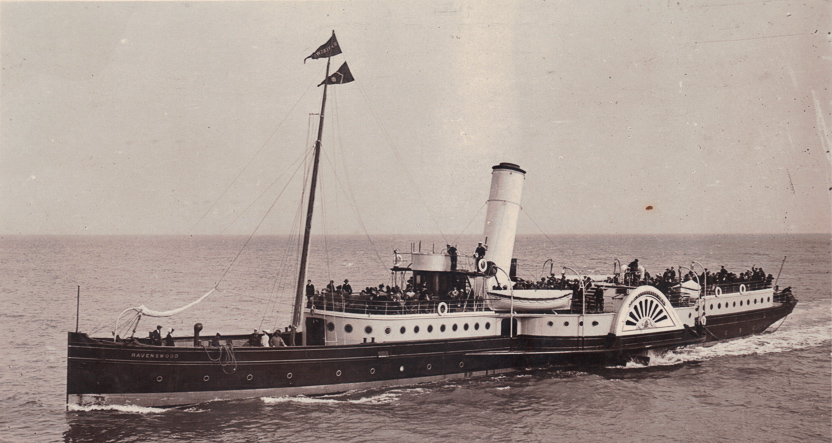 |
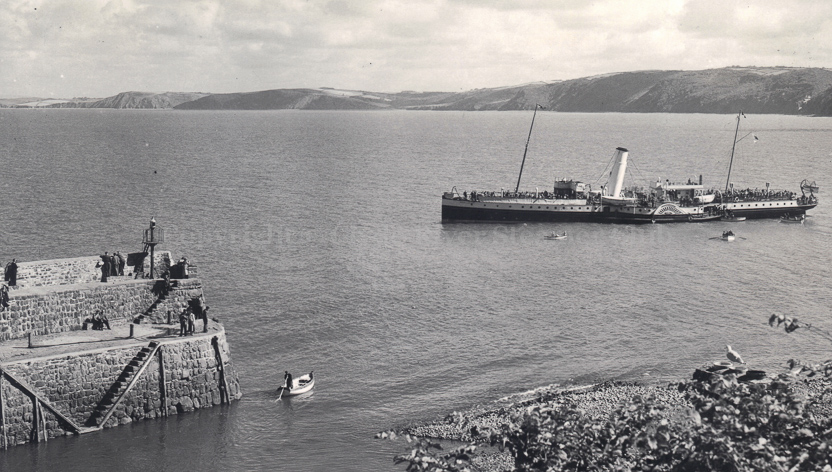 |
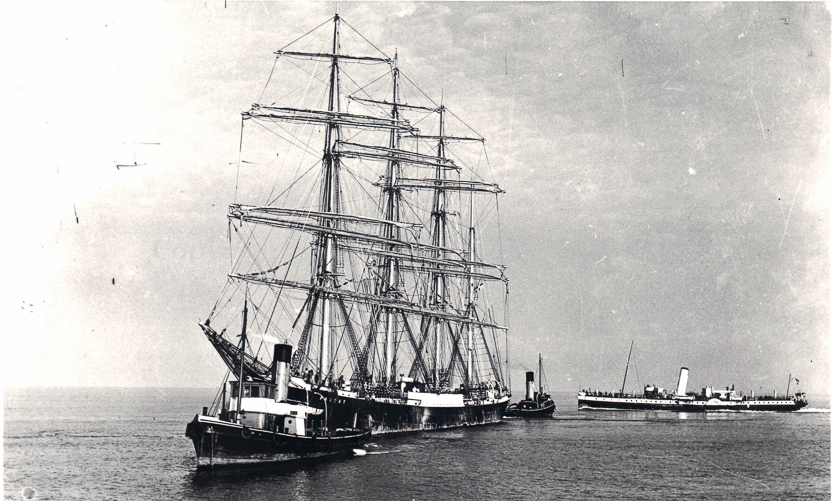 |
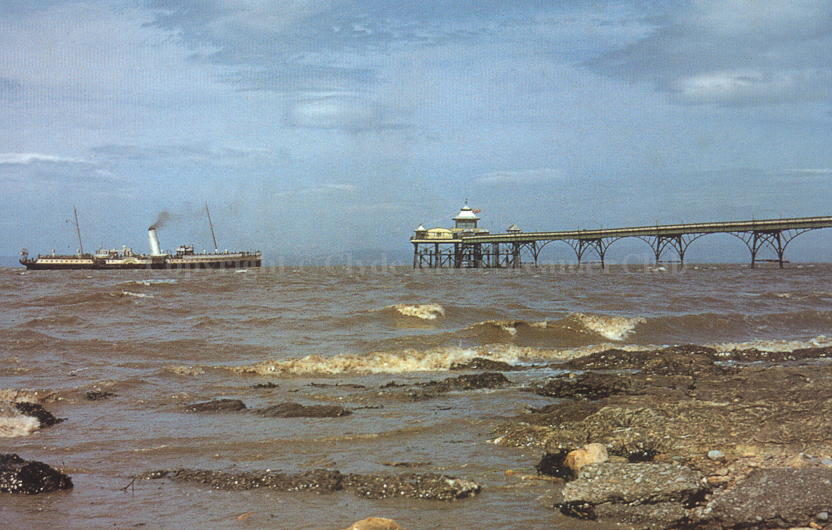 |
| P & A Campbell’s Ravenswood, the first steamer Terry knew
|
Glen Usk at Clovelly
|
Glen Usk passing the four-masted steel barque Passat off Penarth on 4 October 1949 |
Glen Usk at Clevedon, Somerset
|
His first encounter with steamers had been in 1946, when he sailed on P & A Campbell’s Ravenswood and Glen Usk on consecutive days from Barry in south Wales: his home town had had an association with Clyde-built steamers dating back to the celebrated Gwalia of 1905 (known later in her career as Lady Moyra and Brighton Queen). As a boy his favourite had been Britannia, Campbell’s fastest paddler, a lifebelt of which he had inherited. Referring to the premature demise of Bristol Queen and Cardiff Queen in the late 1960s, he said the problem with Campbells had been that “the people who took over the running of paddle steamers from the company’s founders did not know what they were doing”.
It was a mistake he had been determined to avoid with Waverley. Contradicting those who said that running a paddle steamer in the 1970s was no longer viable, he maintained that “if you timetable it right and market it effectively, you will sell the tickets — and if you sell the tickets, the ship is viable”. It was all about capturing the public’s imagination and creating the desire to travel on a paddle steamer.
Terry Sylvester’s first publicity leaflet,
for the Waverley Study Group in 1971,
was an early sign of his marketing flair
He said another plank of the Waverley organisation’s early success had been the management’s freedom to make quick decisions: “We were trusted by our fellow directors to make the right decisions in areas where we had the knowledge.”
Some of his Waverley triumphs were revisited — such as taking the risk of sailing to Llandudno for the pier’s centenary in 1977, developing the West Highlands as an early season initiative, pioneering an advance booking system for day excursions, and discovering that punters in Margate, Southend and other coastal resorts were willing to pay high ticket prices for a sail up the Thames, supplementing the traditional downriver trade. But he also recalled scrambling to find a replacement for the Waverley after the Gantocks disaster (“how vulnerable we were with only one ship”), in which context Prince Ivanhoe and Balmoral were mentioned.
 |
 |
| Prince Ivanhoe passing Ormidale
|
Balmoral in 1985, in the condition in which Terry and his PSPS colleagues found her |
Terry said that, while he regarded Queen Mary as “the ultimate passenger ship”, preserving her was unlikely to succeed because she lacked the iconic appeal of a paddle steamer. He was convinced Maid of the Loch would sail again.
‘The ultimate passenger ship’
The talk, delivered with Terry’s trademark self-assurance, included several references to Douglas McGowan, with whom he had begun the Waverley adventure back in the 1970s. He saluted the ship’s former captain, David Neill, who was in the audience — as was John Whittle, CalMac general manager at the time of Waverley’s handover in 1974. Terry said his words were “a tribute to everyone who has contributed to the Waverley story. One day it will come to an end: nothing lasts for ever.”
A Waverley crew picture from the late 1970s,
with Captain David Neill and Chief Engineer Ken Blacklock
standing at the centre
In a vote of thanks, Iain Quinn made clear that, without Terry’s drive and determination, there would have been no ‘Waverley experience’ for any of us to enjoy these past 40 years.
At the end of his talk, Terry Sylvester (right)
was reunited with Captain Neill (left) and John Whittle (centre)
All photographs above are from Andrew Clark’s collection.
On the night of the meeting Terry was unable to use some images that he had brought along on a disc, due to technical difficulties. He did, however, kindly give permission for any images on the disc to be used on the website and the selection below is from Terry’s disc.
The disc also contained a number of copies of marketing and publicity material, from years gone bye. Terry stressed how important it had been to get the message out to the widest possible audience and to deliver a consistent and clear message about the vessels and sailing opportunities. Rather than publish a series of these images on the website, they have been combined into a PDF document which can be read here.
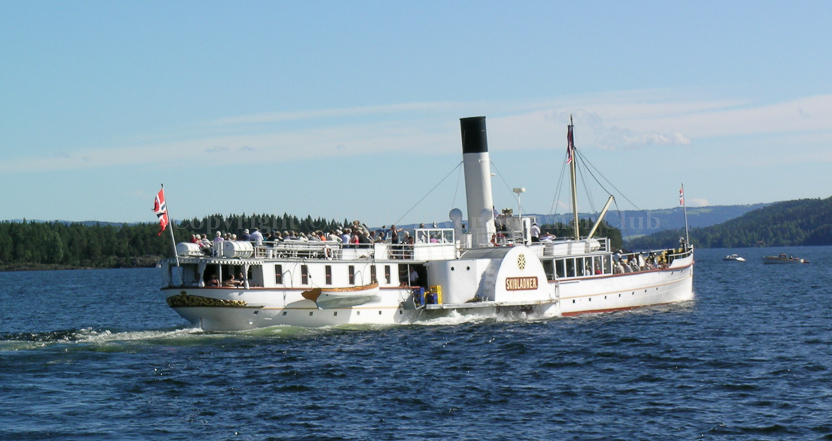 |
Click on the image if you
would like to take a short trip on Skiblander
|
| Norwegian paddle steamer Skibladner (Image used under wiki common use license) |












